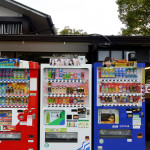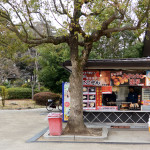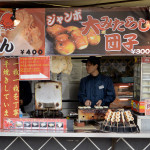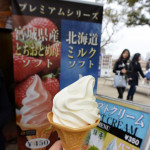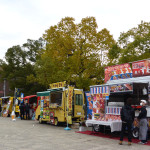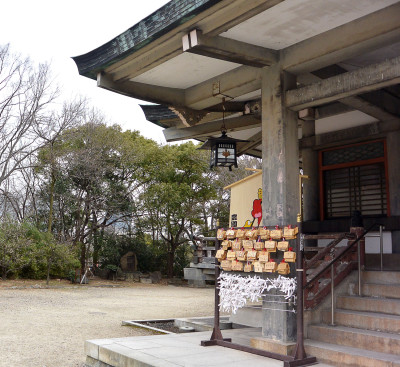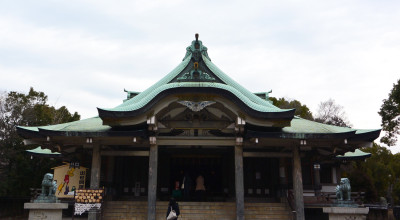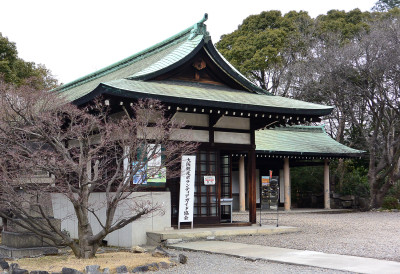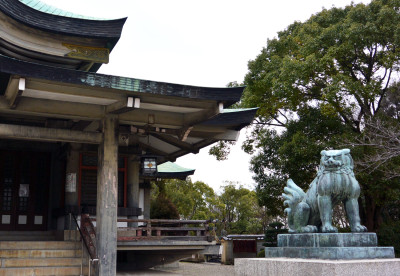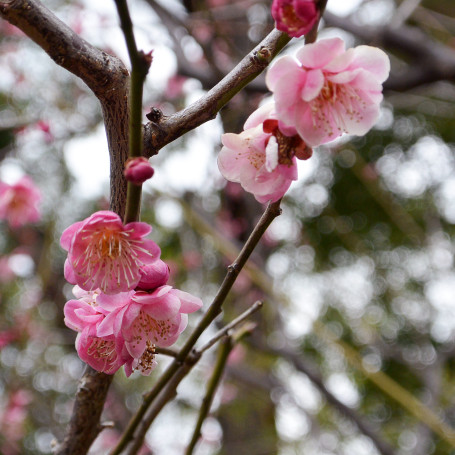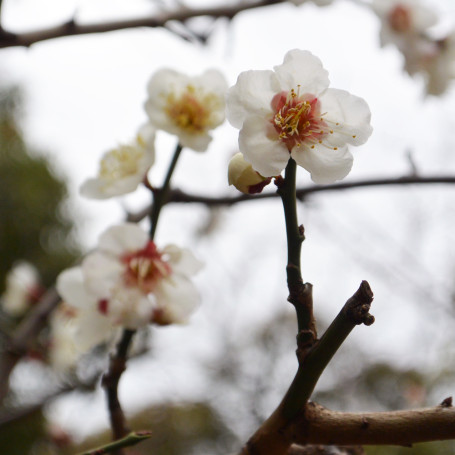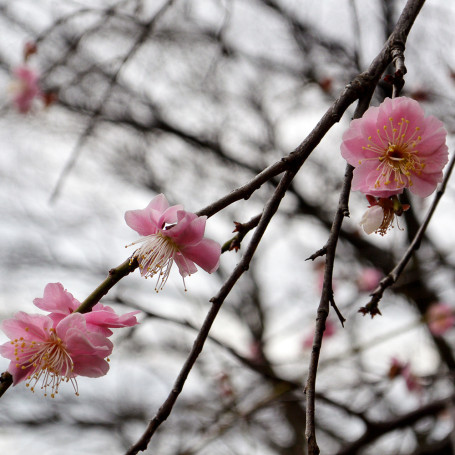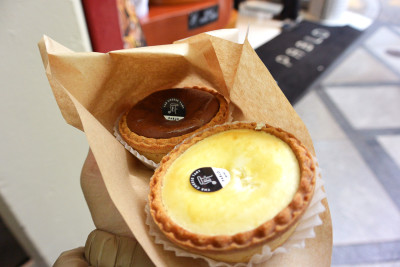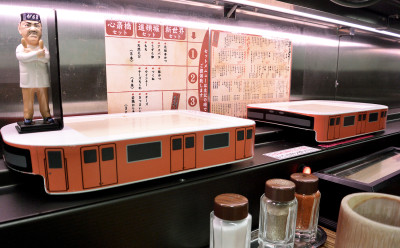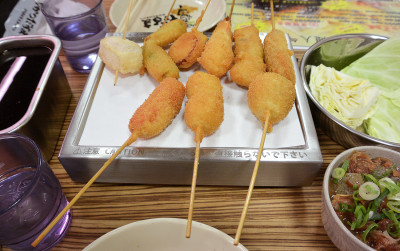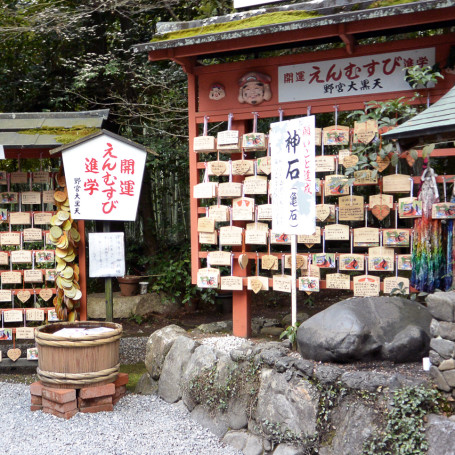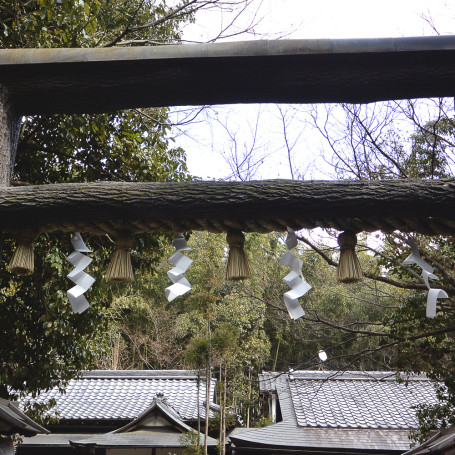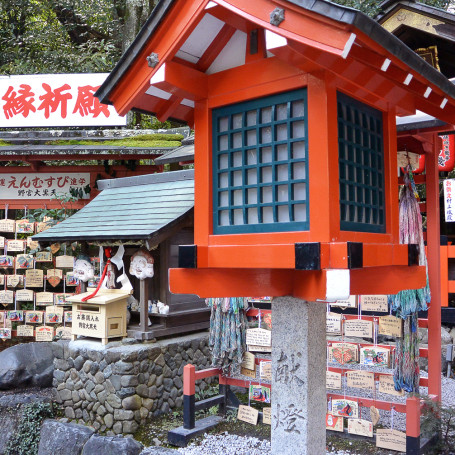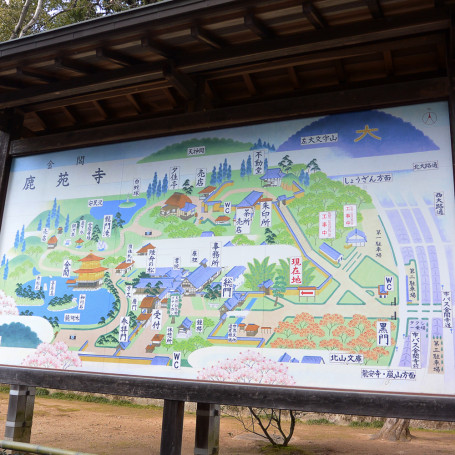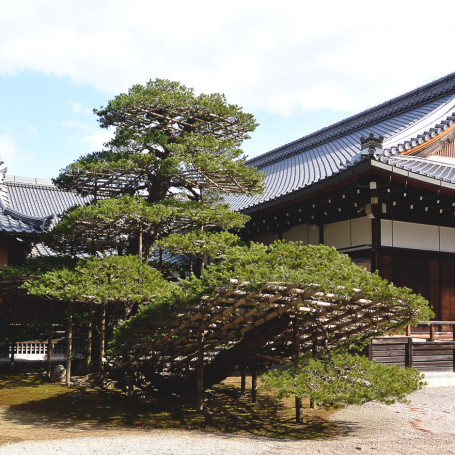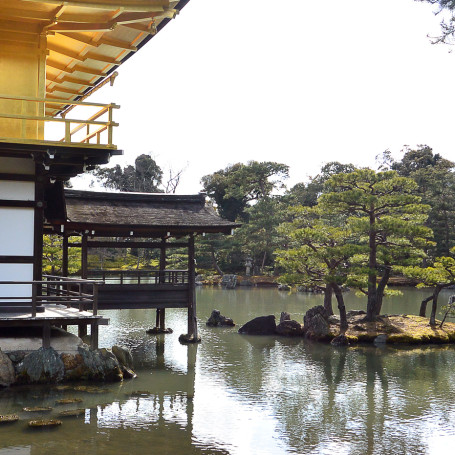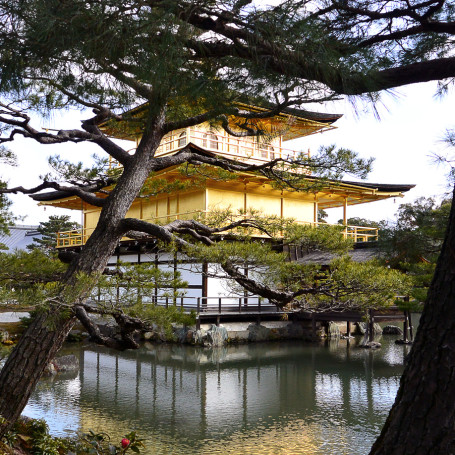[big_image v=”” h=””]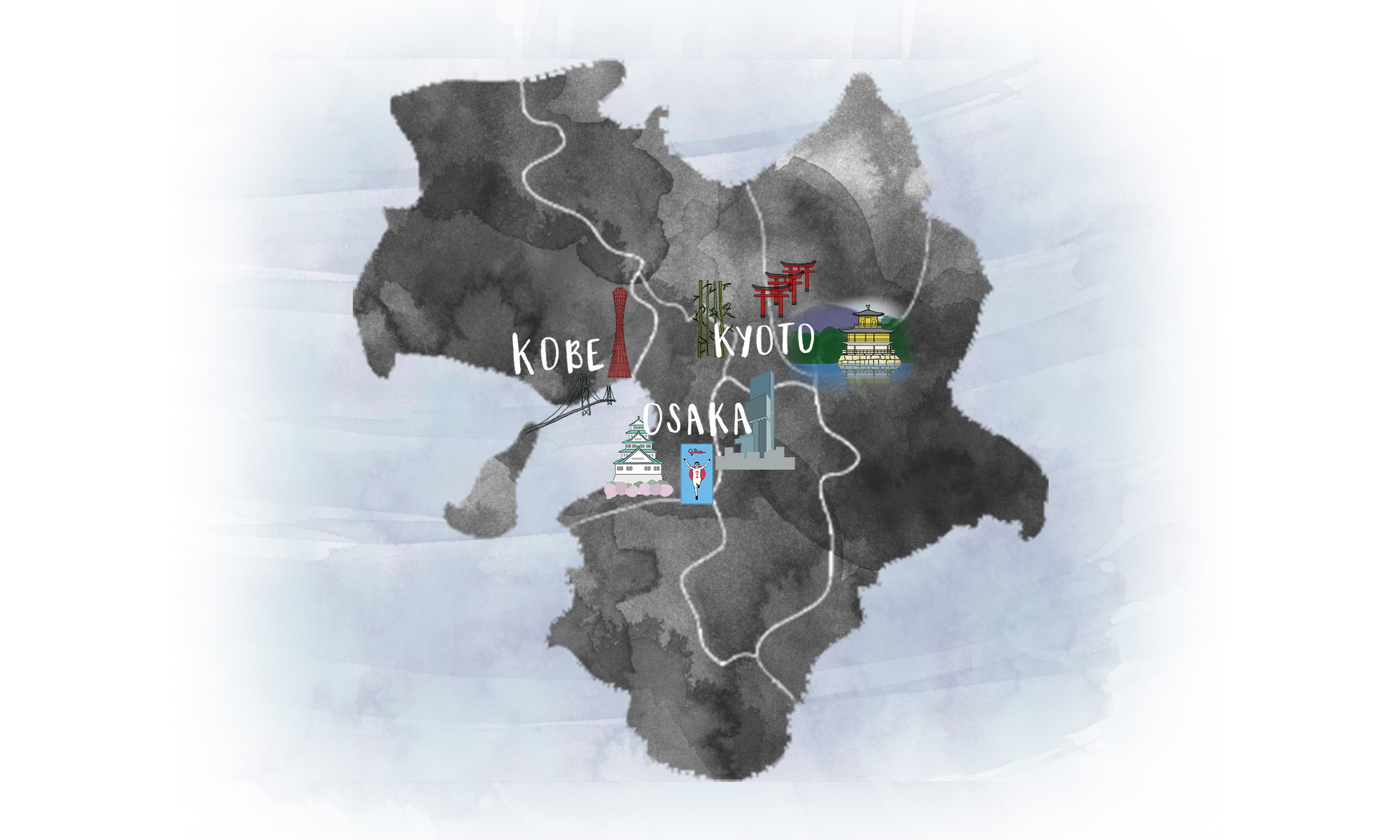 [/big_image]
[/big_image]

[two_third] [/two_third]
[/two_third]
[one_third_last]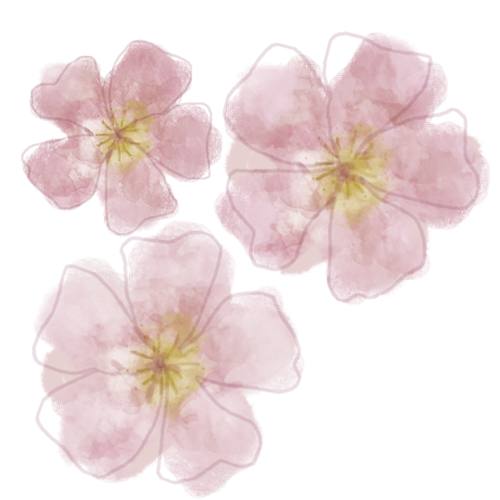 [/one_third_last]
[/one_third_last]
[two_third]
Osaka Castle
After landing at Kansai International Airport and making the short trip into Osaka, the first stop was to the iconic Osaka Castle. Built by Hideyoshi Toyotomi in the 16th century, the castle symbolized the unification of Japan. Over the centuries, it was destroyed in wars and continuously rebuilt. The present-day tower is the third-generation construction, built in 1931, and survived the air raids of WWII. Today, the castle grounds are filled with tourists from around the world, enjoying the expansive view from the tower and meandering through the gardens and thirteen historical structures throughout the urban park.
[/two_third]
[one_third_last]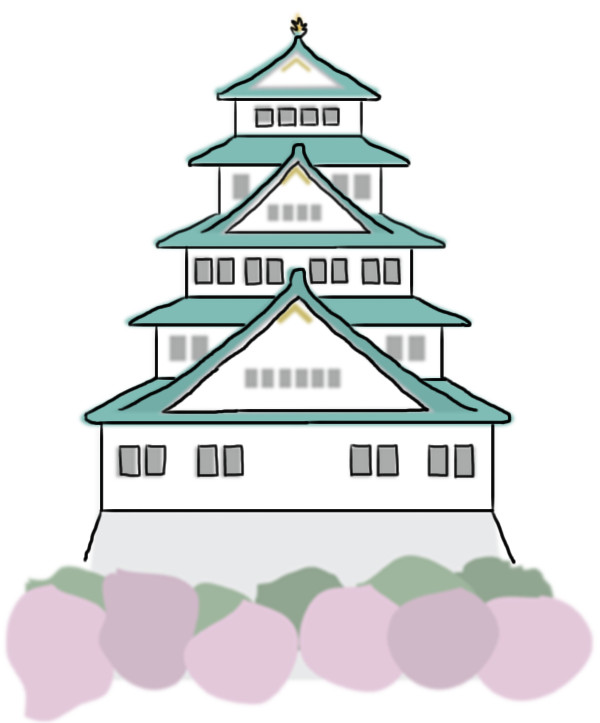 [/one_third_last]
[/one_third_last]
[two_third padding=”0 10px 0 0″]
Entrance to the grounds was free, but certain parts – like the museum and observation deck – were ticketed. Wandering around the park was enough for me. Across the outer moat and through the imposing gate, I finally got a full view of the beautiful castle. I may or may not have spent 10 minutes just admiring the gold details and wondering why all roofs can’t be sea foam colored. After picnicking with some fancily packaged sushi (srsly the box was so pretty I wanted to keep it), I wandered around the many storefronts and food truck/stands for dessert. [/two_third]
[one_third_last padding=”0 0 0 10px “]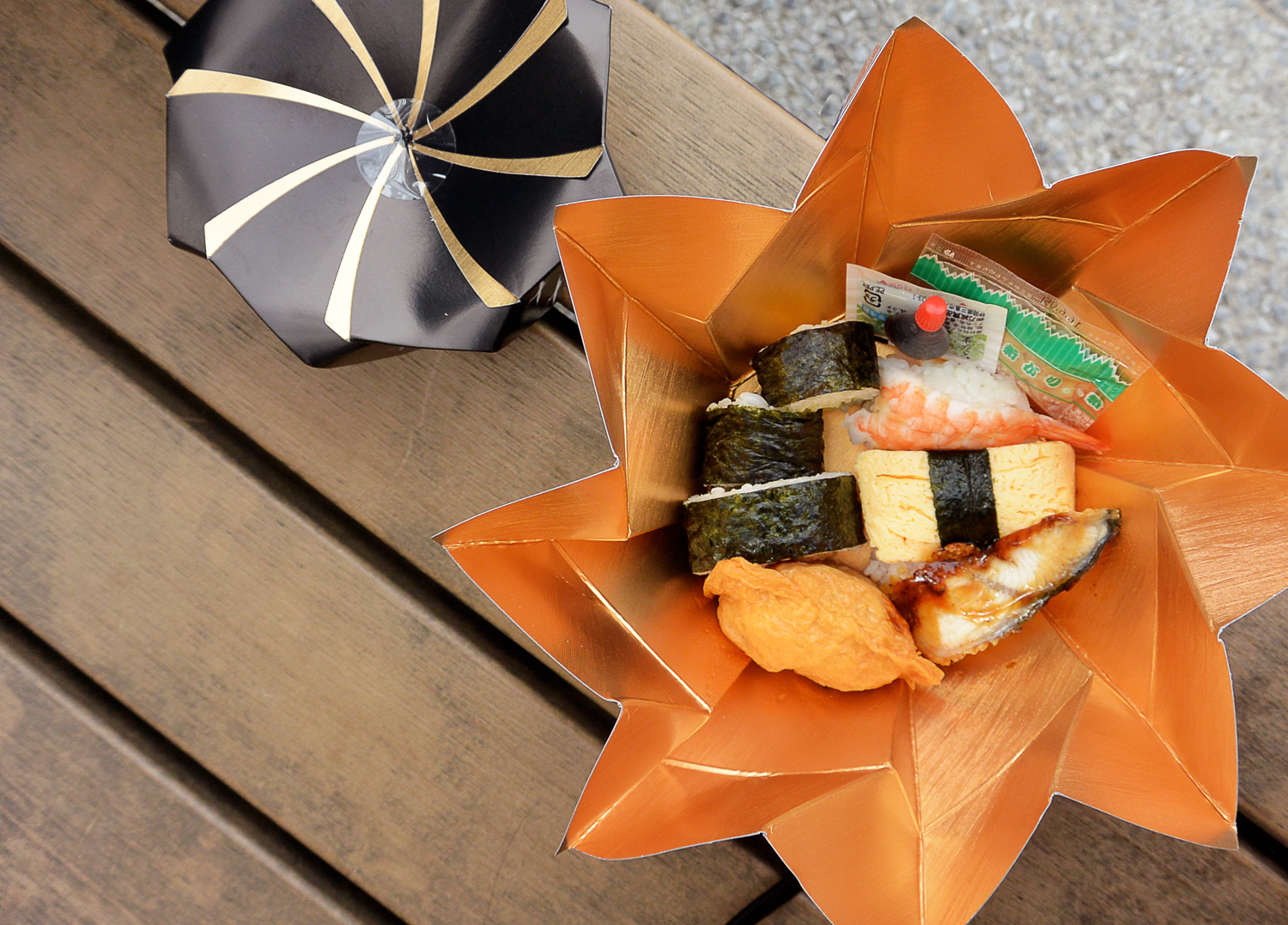 [/one_third_last]
[/one_third_last]
I ended up opting for what I called “mochi kabobs” but is actually called mitarashi dango. The grilled rice-based rounds were served up on a skewer and slathered with a savory soy paste. Definitely not the sweet dessert I was looking for, but still a nice hot snack after eating cold sushi in the brisk weather. For real dessert, I figured I’d be safe with ice cream. Yes, I realize that craving ice cream in 40°F weather is not normal; but (I didn’t know this at the time) enjoying frozen treats during the chilly winters is encouraged in Japan. Apparently, they say that having cold foods sort of calibrates your body to the cold temperatures outside, thereby making you a little more immune to the cold. Regardless, I eat ice cream year-round so I was just happy to see that I wasn’t alone. The Hokkaido cream flavored ice cream was super rich and milky. I think it might be an acquired taste, because I still prefer the sweet fragrance of plain old vanilla.
[big_image v=”” h=”150px”]
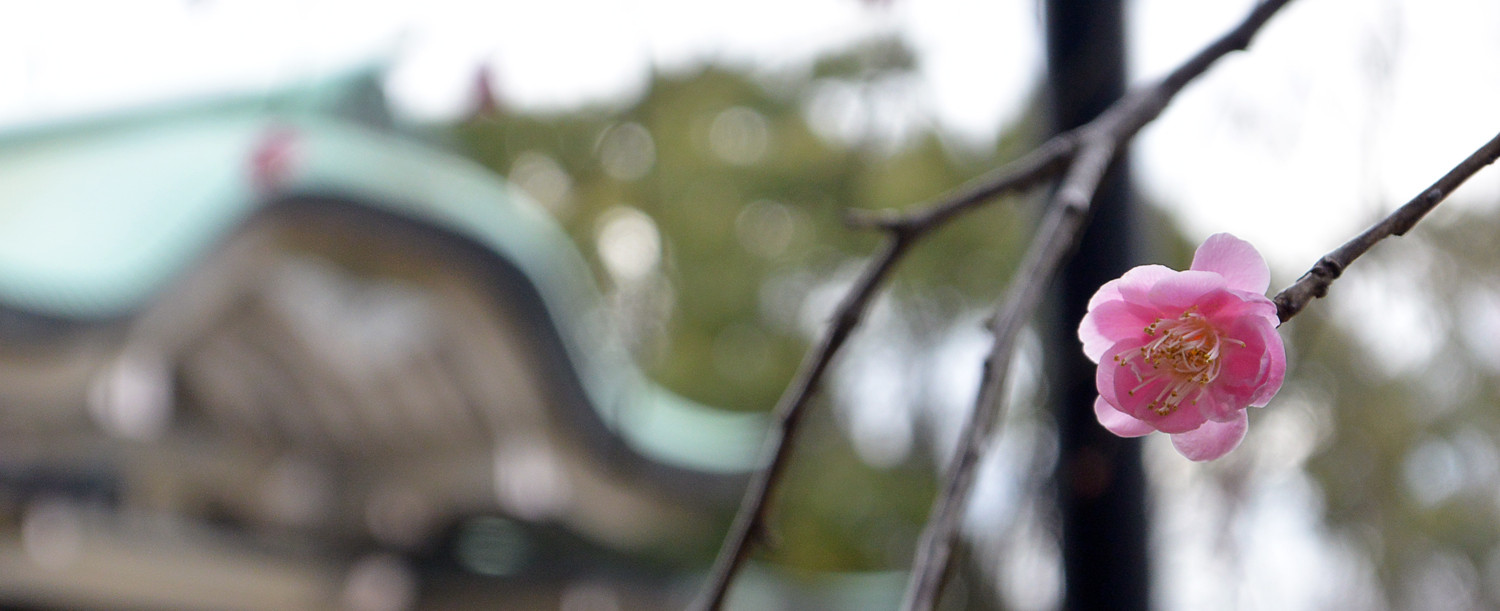 [/big_image]
[/big_image]
[one_third padding=”0 5px 0 0″]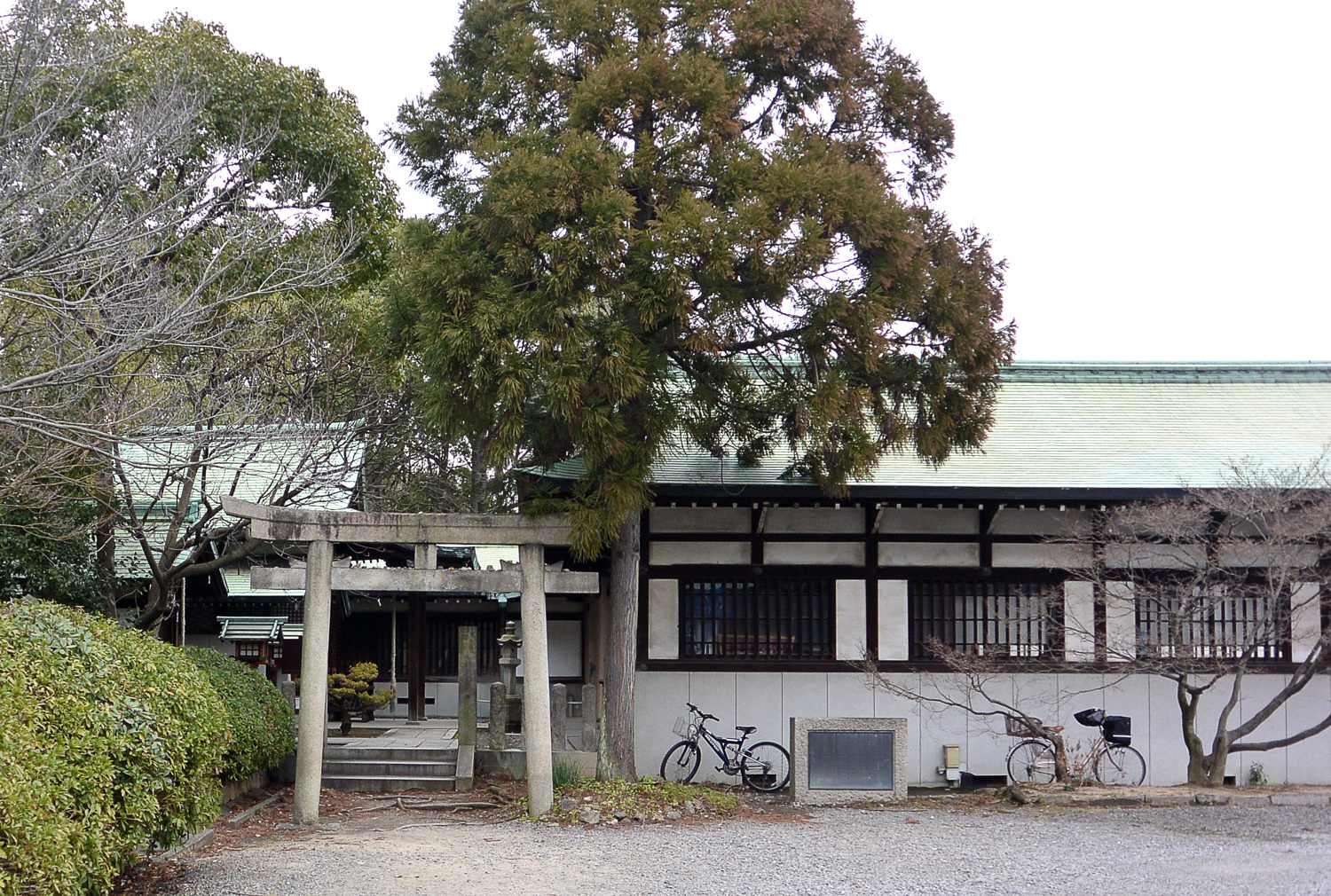 [/one_third]
[/one_third]
Back out the gate, I found myself wandering away from the crowds and towards the Hokoku-jinja shrine. The shrine was built in the 19th century to honor the castle’s founder, Hideyoshi Toyotomi. Leading up to the main shrine were several traditional buildings that almost made me feel as if I were walking through a neighborhood from a different century.
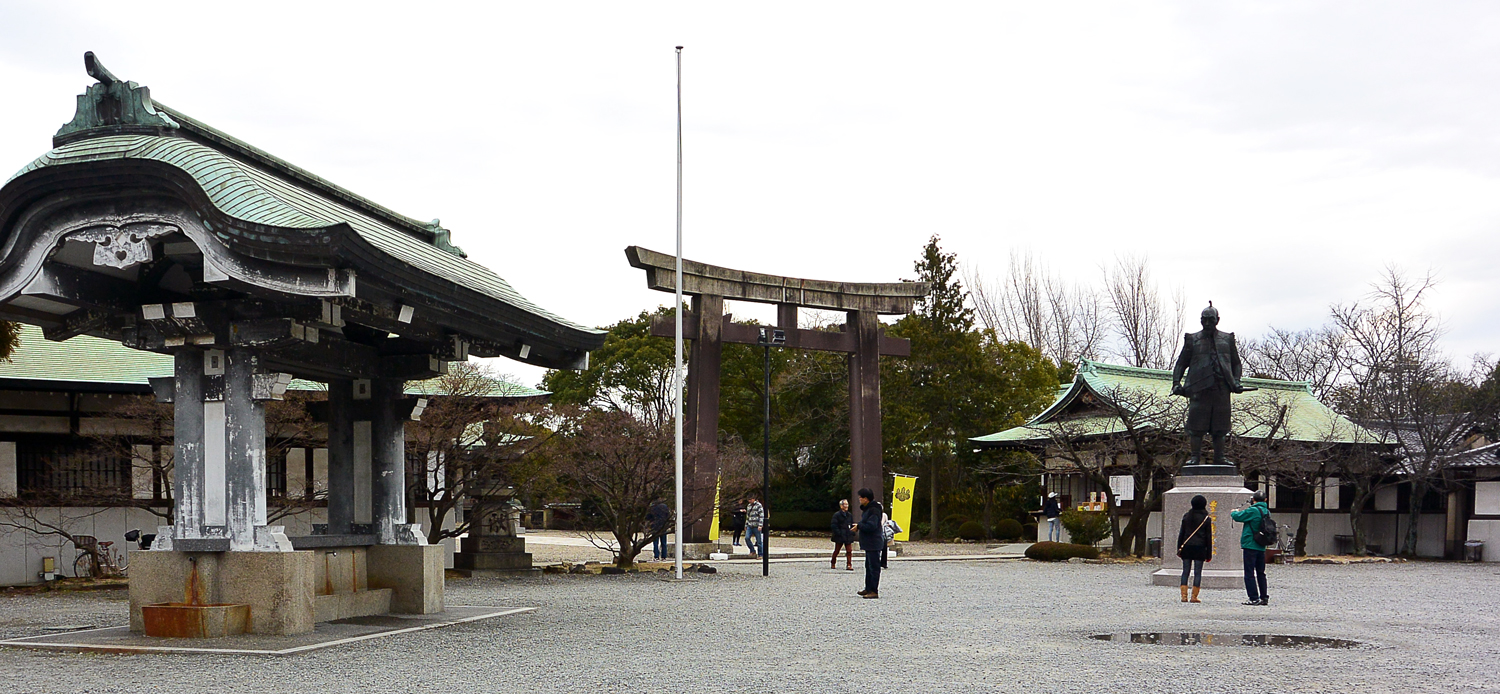
[one_third padding=”0 5px 0 0″]
[/one_third]
[two_third_last padding=”0 0px 0 0″]
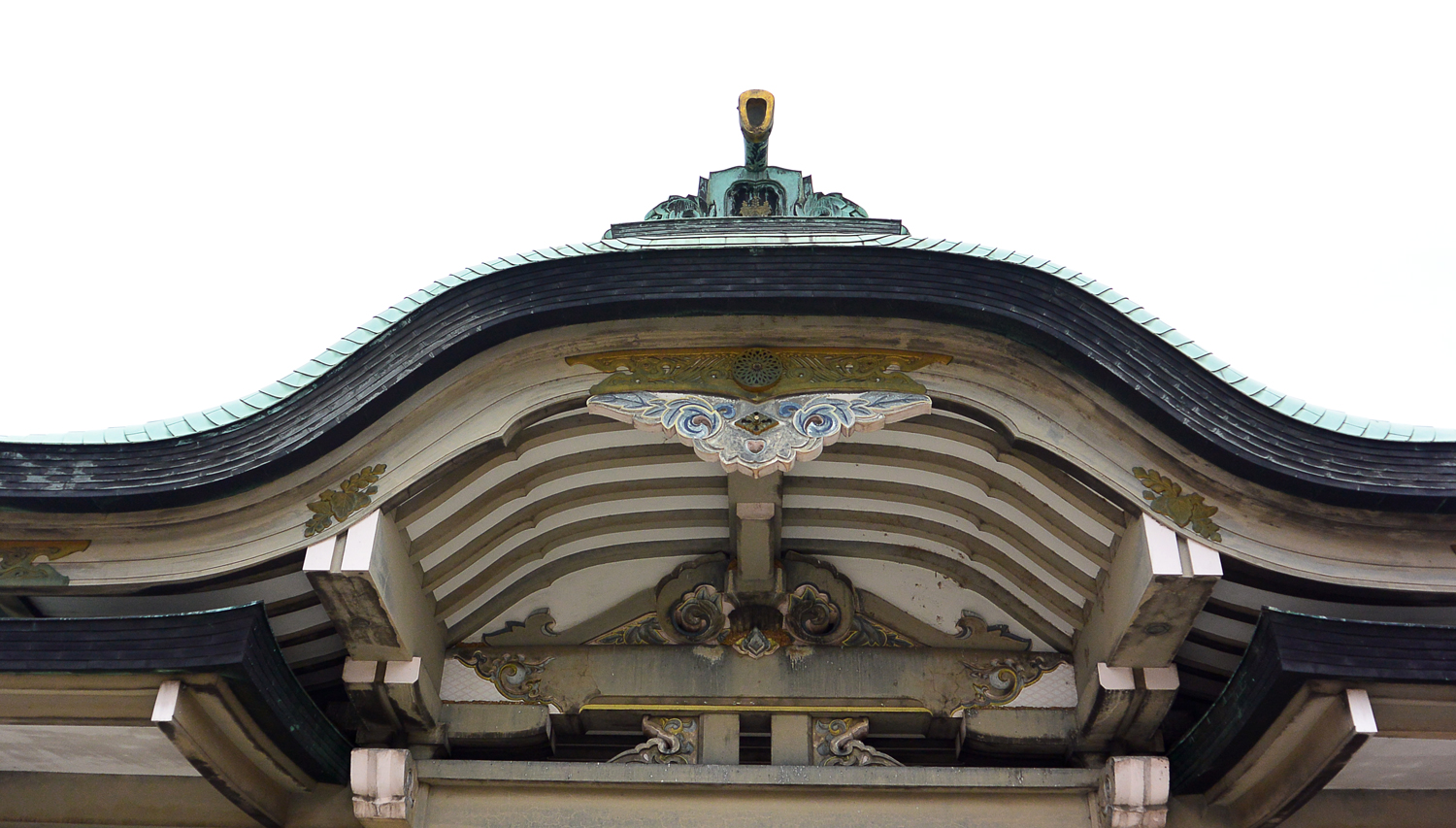
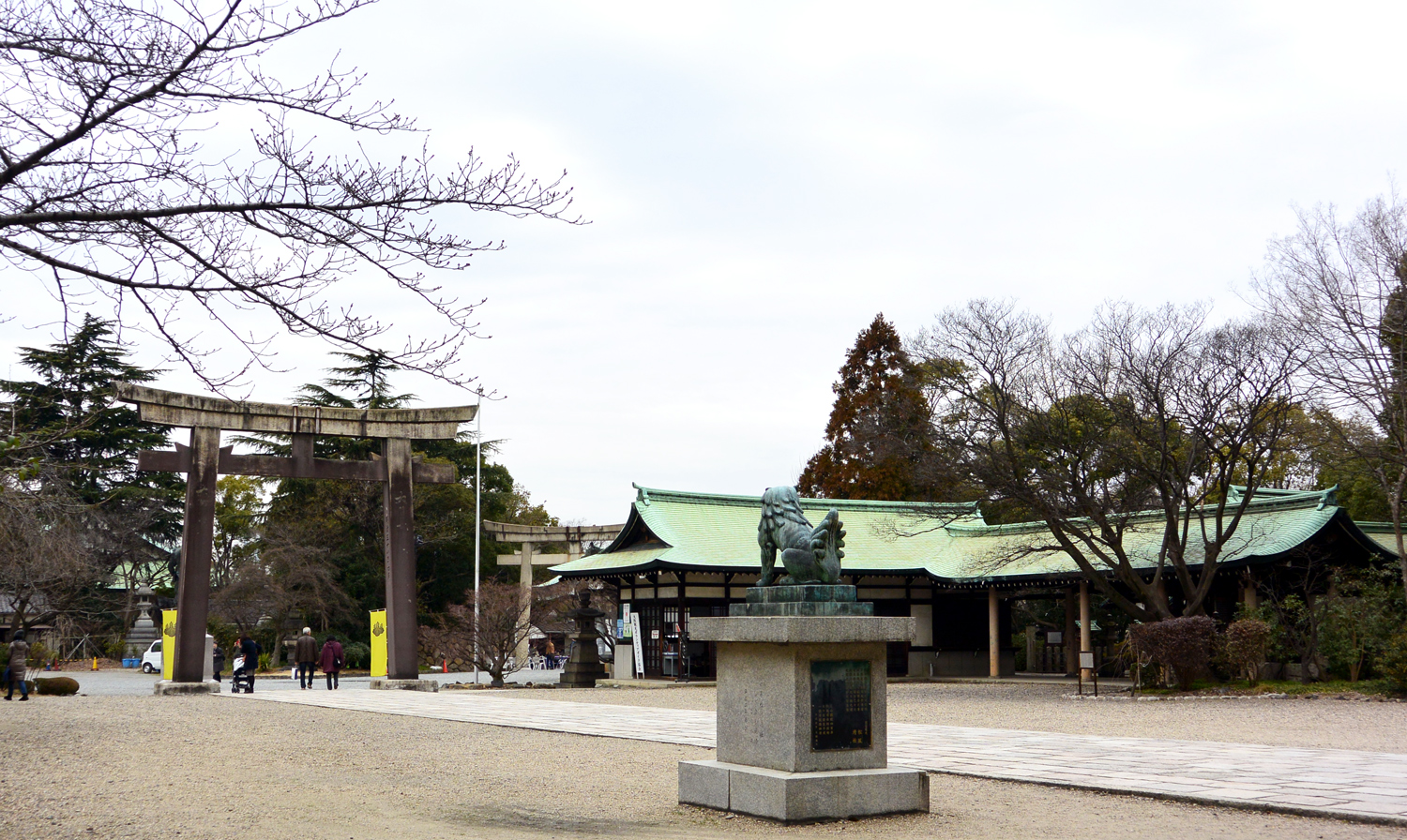 [/two_third_last]
[/two_third_last]
We ended up wandering a little bit too far and got lost walking around the outer moat. But the unintended detour led to a beautiful garden of plum trees. While Osaka Castle is most popular during cherry blossom season in late March/early April, we managed to catch sight of some of the first plum blossoms of the season. Though largely out-shined by the later cherry blossoms, plum blossoms are still traditionally celebrated in Japanese culture.
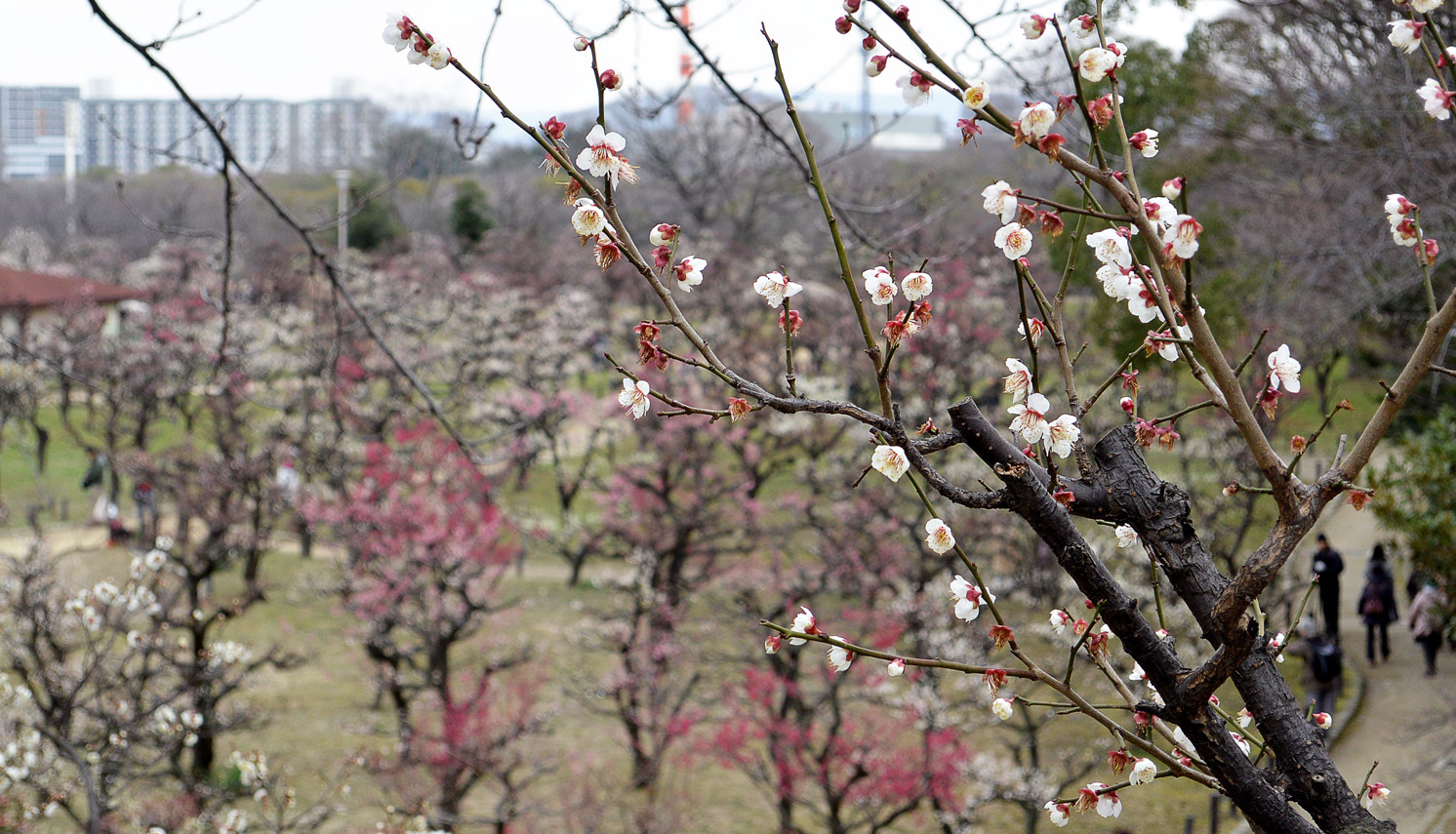
[one_half padding=”0 0px 0 0″]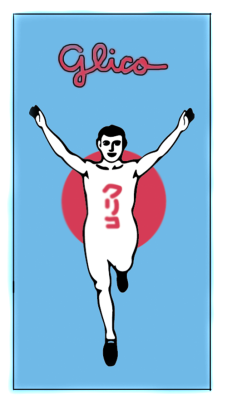 [/one_half]
[/one_half]
[one_half_last padding=”0 0px 0 0″]
Dotombori/Shinsaibashi
With the cultural history part of the day out of the way, it was time to follow the neon lights to Dotombori / Shinsaibashi to shop (and eat)! The downtown shopping districts follow the Dotonbori-gawa Canal. One covered promenade leads to another, and international brands like Bershka (Zara’s Forever 21) and Garrett’s (yes, the famous popcorn from Chicago..) are scattered among Japanese brands like Uniqlo and Bic Camera; and the smaller alleys branching off from the promenade are filled with small restaurants and pubs. The heart of the district is the running Glico man, the most recognizable of the wall of neon signs. It’s like the Time Square or Picadilly Circus of Osaka. [/one_half_last]
[one_third padding=”0 10px 0 0″]
[/one_third]
[two_third_last padding=”0 0px 0 0″]
But tbh the insane crowds of Chinese tour groups clamoring to sweep out every drugstore in sight was an extreme turnoff (actually, it was pretty scarring), so I stayed as far as I could and opted for food instead.
This store called Pablo had an ever-present line (both at locations spotted in Japan and Taiwan) for its fresh made cheesecake tart…things. They were pretty good, but my American tastebuds still miss decadent Cheesecake Factory versions.
For an early dinner, we went to a place famous for selling fried food on sticks – and for their strict no double-dipping rule. The menu had a ton of pictures so it was easy enough to guess our way through the menu with the help of a Chinese character here and there. We ordered a combo set, with everything from fried veggies to mini hot dog and mochi. Each table has its own container of dipping sauce. And they station people around the restaurant to make sure no one is double dipping. My favorite part was that the food comes on this little train thing, racing out on a tray from the kitchen, and then the Japanese man figurine shouts Japanese words at you until you figure out what button you’re supposed to press to excuse him.
[/two_third_last]
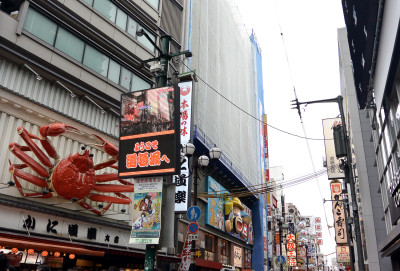
Dotonbori’s famous seafood restaurant, Kani Doraku, is hard to miss with its iconic (& moving) giant crab sign.
But instead, I voted for a FamilyMart snack haul. FamilyMart another chain like 7-Eleven. Except to understand what that entails, one must understand the culture of convenience stores in Asia. In Taiwan, for example, people can do everything from pay phone bills to order concert tickets, from check blood pressure to pick up packages at their nearest convenience store, in addition from buying everything imaginable (i.e. food that you can heat and dine in, or once I saw one selling a TV…). In Japan, 7-Elevens are actually duty free, if you spend over 5000¥, which is like $45, which sounds crazy but considering you could actually buy everything short of furnishing your home there, it is very doable.
[one_half padding=”0 10px 0 0″]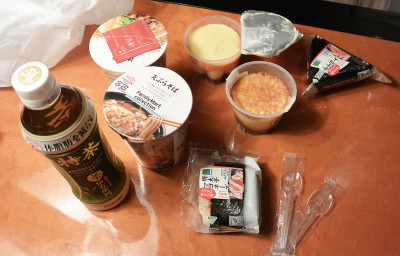 [/one_half]
[/one_half]
[one_half_last padding=”0 0px 0 0″]
The FamilyMart that I wandered into even had MUJI stationary. (Anyone that knows me knows how much that means to me!) But I restrained myself and only bought food items. Clockwise: sugar free green tea, tempura instant noodles, spicy sesame instant noodles, pudding (different brands of the same custardy goodness), salmon onigiri and ikura onigiri. Back at the hotel, (we were at the Hyatt, which is stranded pretty far from the city center) dinner was thus served.
[/one_half_last]
[one_third padding=”0 0px 0 0″] [/one_third]
[/one_third]
[two_third_last padding=”0 0px 0 0″] [/two_third_last]
[/two_third_last]
[one_half padding=”0 10px 0 0″]
A lot of Asian tourists come to Osaka to go to Universal Studios. Considering I used to work on the Hollywood lot, I decided to do something else. So after breakfast at the hotel, we set off to go back into town.
[/one_half]
[one_half_last padding=”0 0px 0 0″]
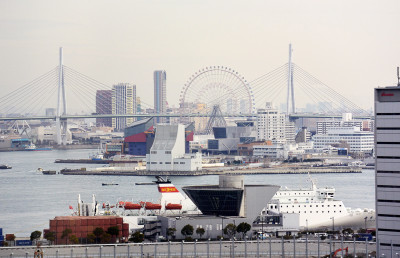
[/one_half_last]
Shitennoji Temple
Somehow I managed to figure out the subway system well enough to head back to the city center and wander my way over to Shitennoji Temple. One of the oldest temples in Japan, Shitennoji was first built in the 6th century. Over the centuries it has been rebuilt several times. Sadly, the inner precinct is still currently (in 2016) under construction and is scheduled to reopen in 2022.
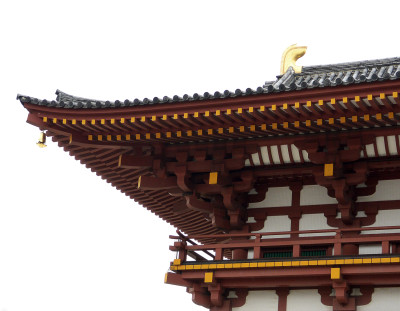
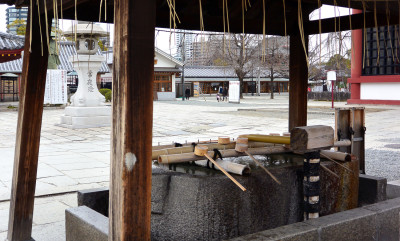
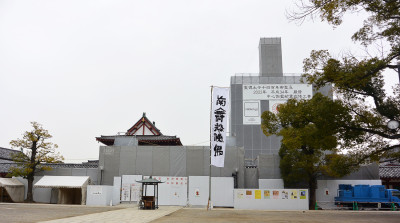
Regardless, entrance to the outer grounds was free and it was still really pretty to explore for a little bit.
A short distance away, at Tennoji Station, it’s a completely different scene. Tall buildings with one department store (which, in Asia, is basically a giant mall and definitely not Macy’s) after another. We (I think) managed to hit 3 or 4 before giving up and heading out after the worst of the evening rush hour. I’ll do a separate post on shopping later and link it here.
[one_half padding=”0 10px 0 0″]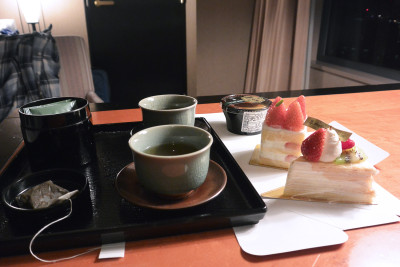 [/one_half]
[/one_half]
[one_half_last padding=”0 10px 0 0″]
Also, I just have to mention how much I love Japanese bakeries and desserts. Not only is everything super cute and delicious (it was strawberry season), but they package it all beautifully. If you buy a slice of cake in America (or anywhere else in the world, probably), it’ll come in a smallish box that you have to carefully hold still to make sure it doesn’t shake around in the box. In Japan, they put these little cardboard pieces to hold it still in the center, and add mini ice packs to make sure that how you see it in the counter is how you’ll eat it at home. [/one_half_last]
[one_third padding=”0 10px 0 0″]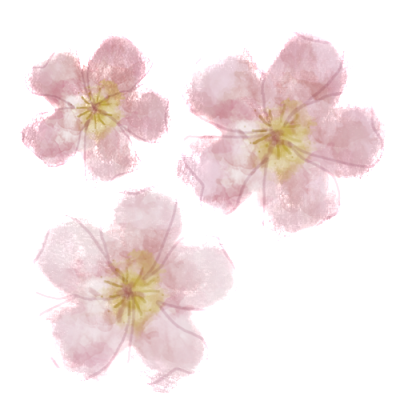 [/one_third]
[/one_third]
[two_third_last padding=”0 0px 0 0″] [/two_third_last]
[/two_third_last]
[one_half padding=”0 10px 0 0″]
On day three, it was off for a day trip to Kyoto, about an hour bus ride away. The former capital is known to be the city of a thousand temples, one of the most beautiful places to experience traditional Japanese culture, and a stark contrast from the nearby Osaka. It is definitely a place I need to go back and explore more of.
[/one_half]
[one_half_last padding=”0 0px 0 0″]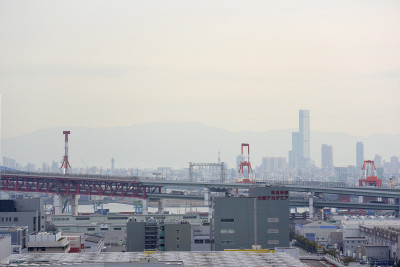 [/one_half_last]
[/one_half_last]
[big_image]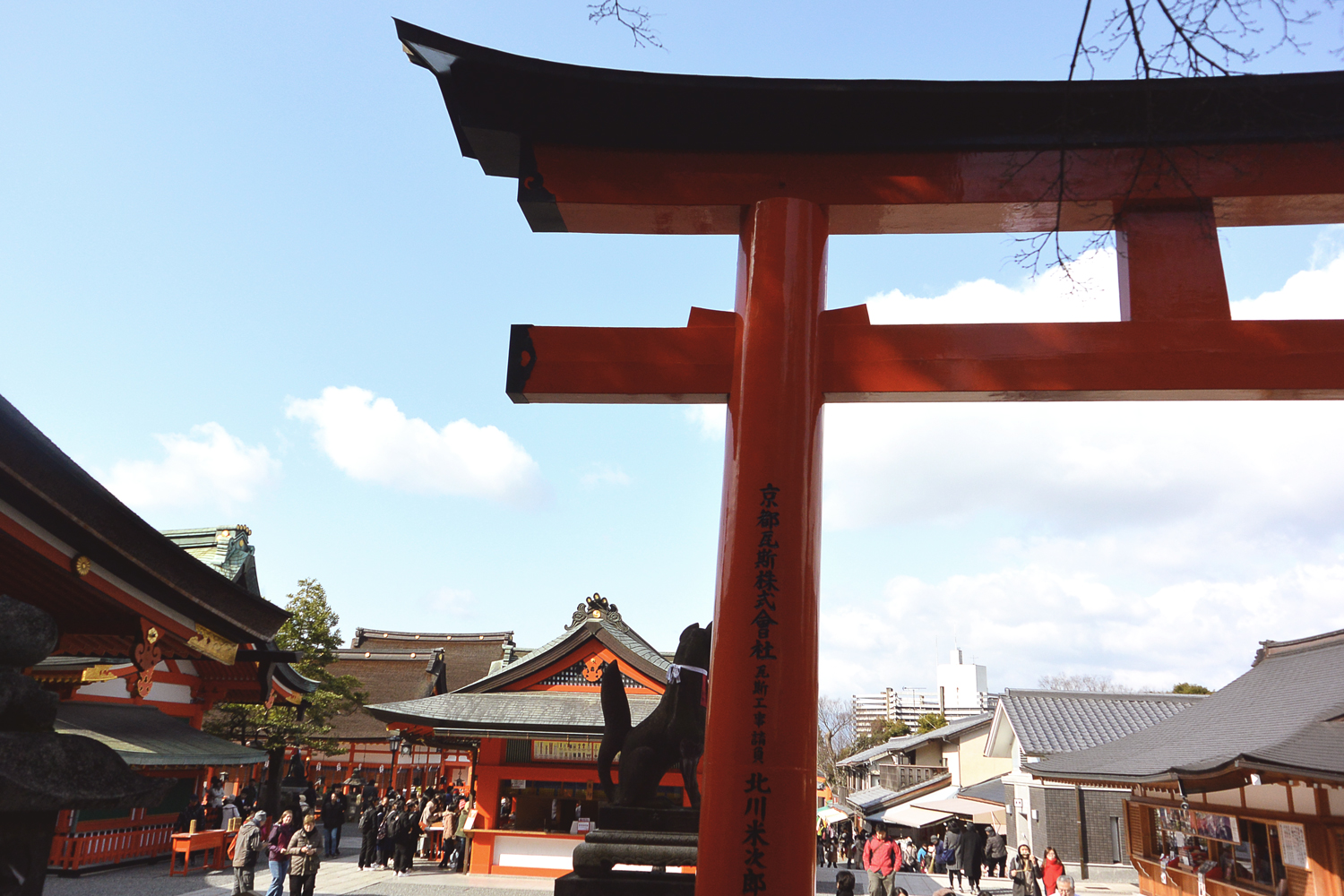 [/big_image]
[/big_image]
FUSHIMA INARI SHRINE 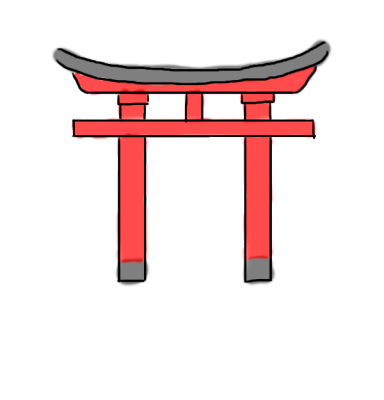
The first stop was a Shinto shrine in southern Kyoto. Known for its endless row of red gates, called torii, that line the path up the mountainside, the shrine is dedicated to Inari, the god of rice. The god’s messengers are foxes (kitsune), so many fox statues decorate the buildings and trails. Going up the entire way takes 2-3 hours, but in an hour we were able to explore the main building and some smaller shrines a little way up the trails.
The thousands of gates are donated by individuals or businesses and all have names engraved on them. The little ones start at about 400,000¥ (under $4000).
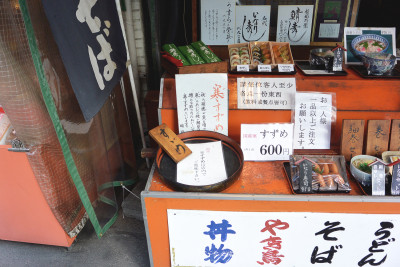
The area is famous for kitsune udon and inari sushi, both of which feature aburaage, fried tofu (sushi rice is stuffed into sweet tofu pouches). These, plus a bunch of other street food and souvenirs, filled the quaint streets leading from the train station to the shrine.
[one_half padding=”0 10px 0 0″]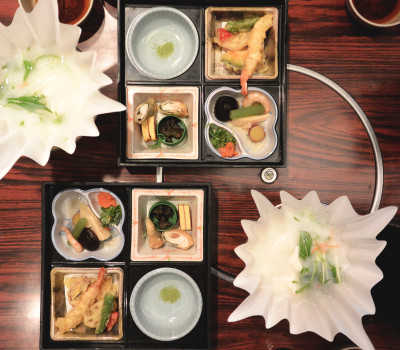 [/one_half]
[/one_half]
[one_half_last padding=”0 0px 0 0″]
The one “traditional” meal we had in Japan. Aka the kind where you have to sit seiza-style (kneeling, with legs tucked in under your butt) on tatami.
[/one_half_last]
[big_image v=”” h=”200px”]
[/big_image]
Arishiyama
 Over on the western part of Kyoto is the district of Arashiyama. The picturesque historical streets are lined with traditional shops, catered to tourists. The central point of interest is Toketsukyo Bridge, and a short distance away is Tenryuji Temple (which sadly didn’t have time to go to), and the bamboo groves.
Over on the western part of Kyoto is the district of Arashiyama. The picturesque historical streets are lined with traditional shops, catered to tourists. The central point of interest is Toketsukyo Bridge, and a short distance away is Tenryuji Temple (which sadly didn’t have time to go to), and the bamboo groves.
Along the main street near the train station, there were rickshaws and a lot of women dressed in traditional clothing (several shops looked like they provided rentals for photoshoots). It was lightly snowing and not super crowded (at least, compared to Fushima Inari, and to Osaka) so it really felt like I was transported to a different time.
Not too far into the bamboo forest is Nonomiya Shrine, with its unique black torii gate. The shrine is dedicated to the god of learning and relationships – which explains why so many women were there hoping for good fortune in finding a perfect match.
My favorite part (ofc) was that so many people were eating ice cream while it snowed.
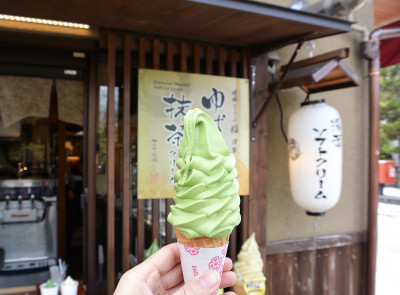
[big_image] [/big_image]
[/big_image]
Kinkaku-ji
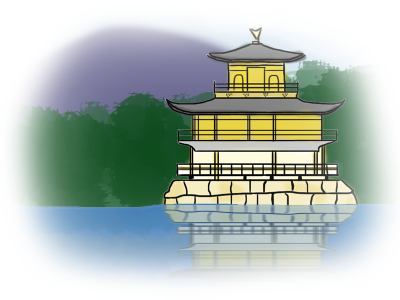 My absolute number 1 favorite thing I saw/did in Japan was this ridiculously beautiful golden pavilion temple. The zen temple is in northern Kyoto and is legit covered in gold leaf. It burned down a few times in its history, the most recent being in 1950, by a crazy person who really wanted to destroy the most beautiful thing he knew to gain fame (ironically, he still didn’t gain any infamy); but was faithfully rebuilt each time. They also have to regularly redo the gold leaf, which sounds crazy expensive but just being able to preserve its beauty for the world to see is definitely worth the maintenance.
My absolute number 1 favorite thing I saw/did in Japan was this ridiculously beautiful golden pavilion temple. The zen temple is in northern Kyoto and is legit covered in gold leaf. It burned down a few times in its history, the most recent being in 1950, by a crazy person who really wanted to destroy the most beautiful thing he knew to gain fame (ironically, he still didn’t gain any infamy); but was faithfully rebuilt each time. They also have to regularly redo the gold leaf, which sounds crazy expensive but just being able to preserve its beauty for the world to see is definitely worth the maintenance.
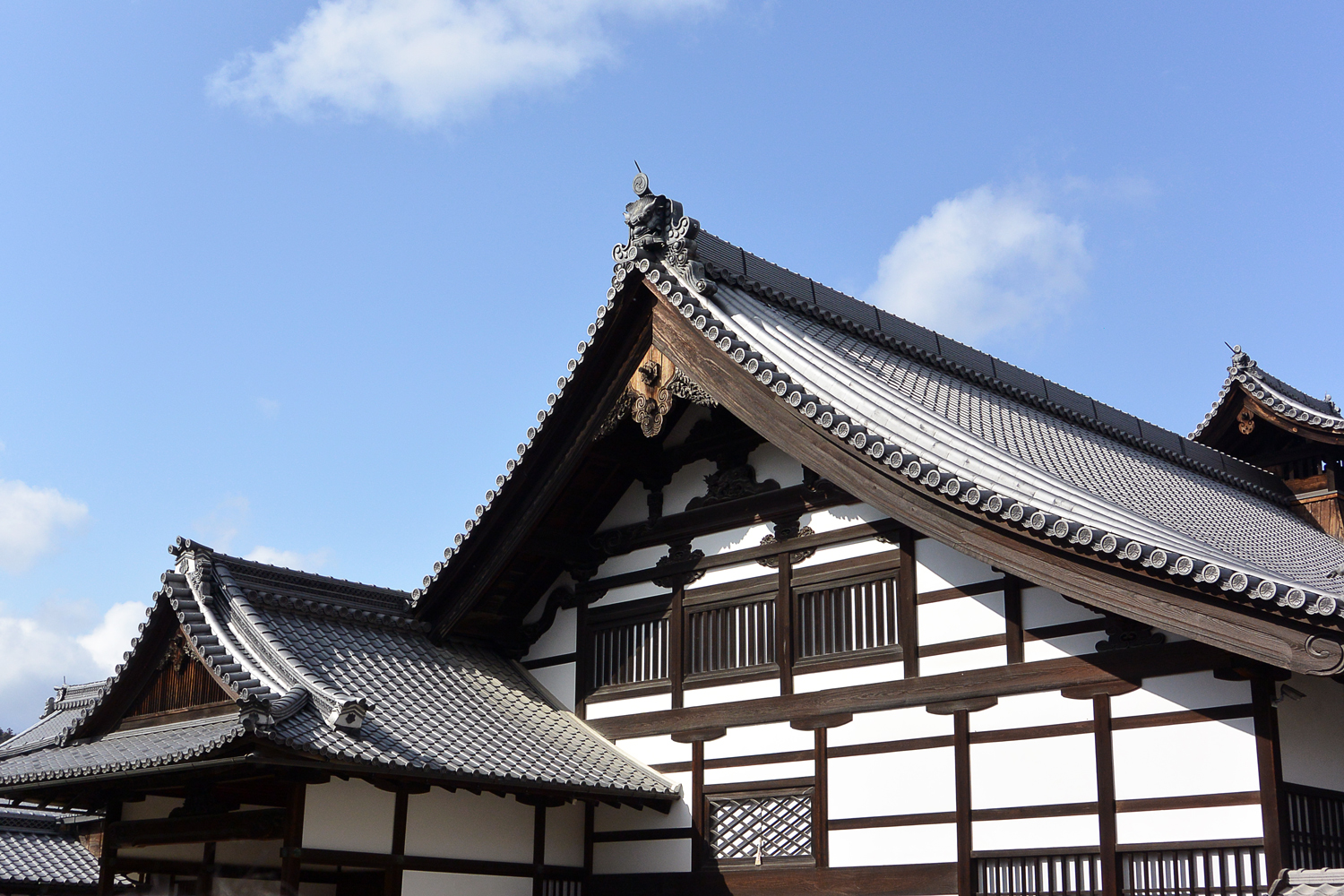
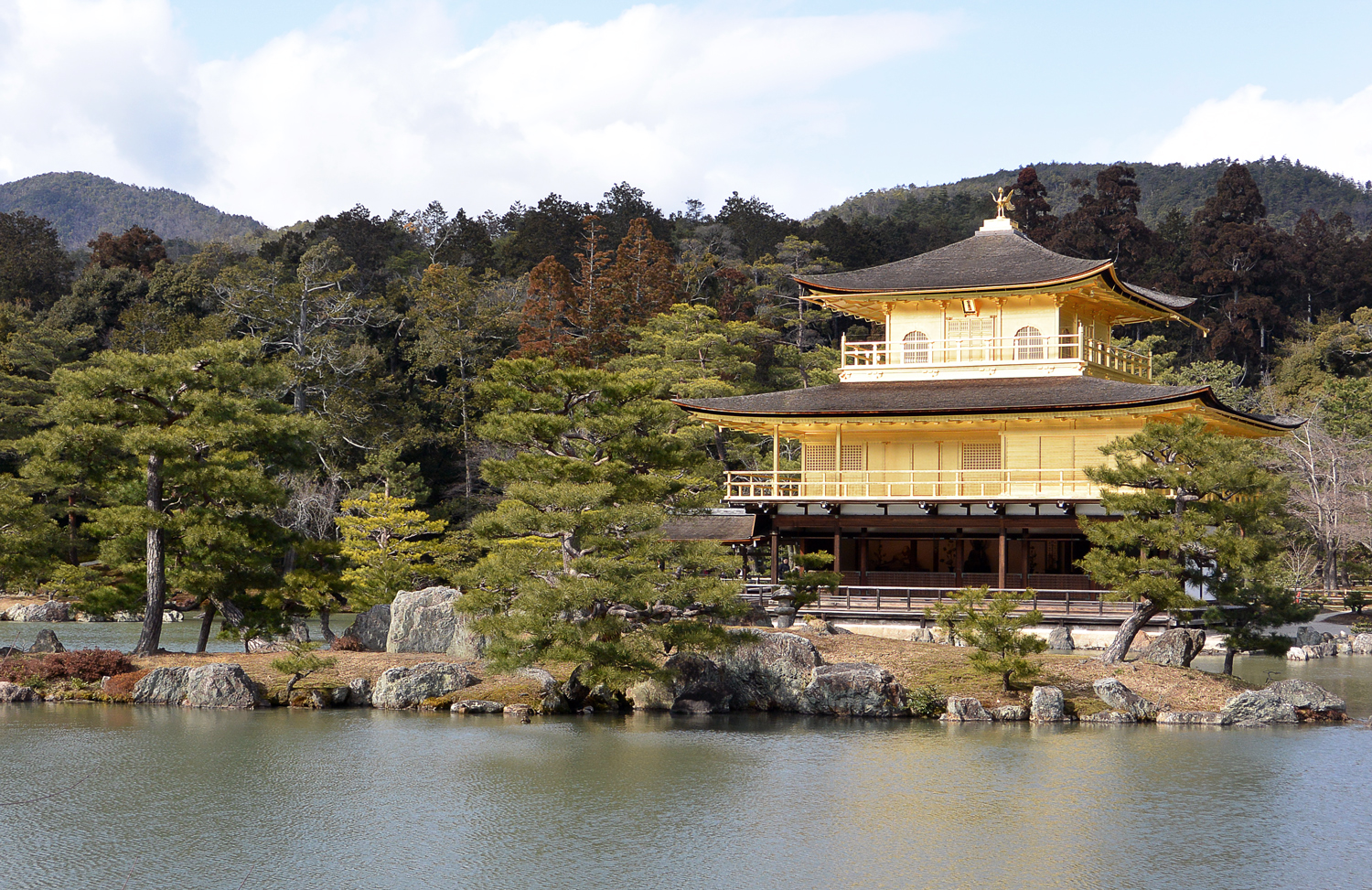
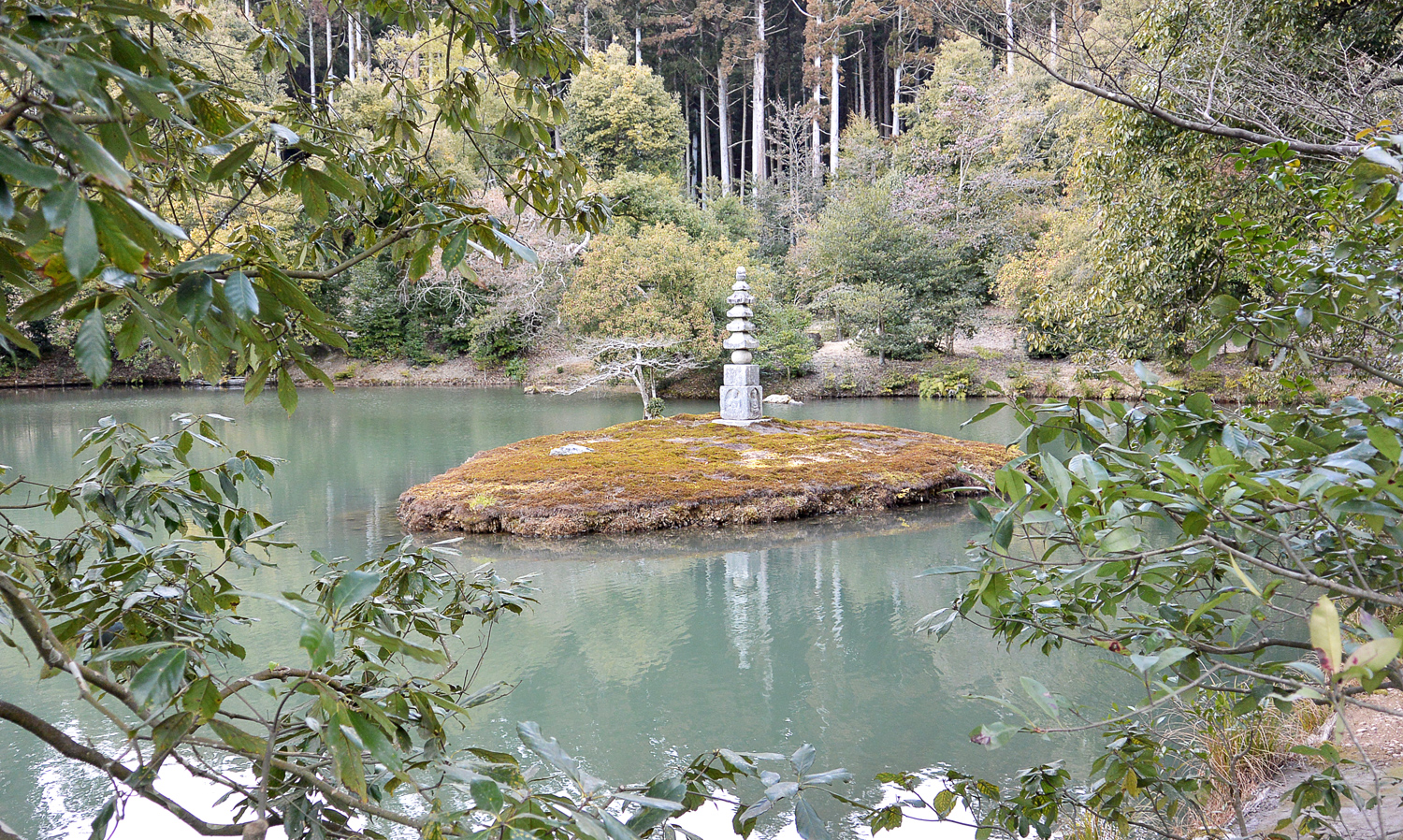
[two_third padding=”0 0px 0 0″] [/two_third]
[/two_third]
[one_third_last padding=”0 0px 0 0″]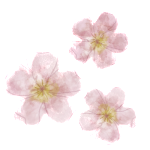 [/one_third_last]
[/one_third_last]
Arima Onsen
My last full day in Japan was spent on another day trip, this time to Kobe, a city west of Osaka. The first stop was to Arima Onsen, a historic town known for its hot springs. I imagine it would be a relaxing weekend getaway, but since we weren’t staying at a hot spring hotel (we were staying in Osaka still), it was still a nice stroll through the neighborhood. They are famous for these super thin crackers that come in a variety of flavors, fresh made at a bunch of the local shops. Apparently when you stare longingly at the sweet old lady making them, she’ll save some samples for you!
[big_image]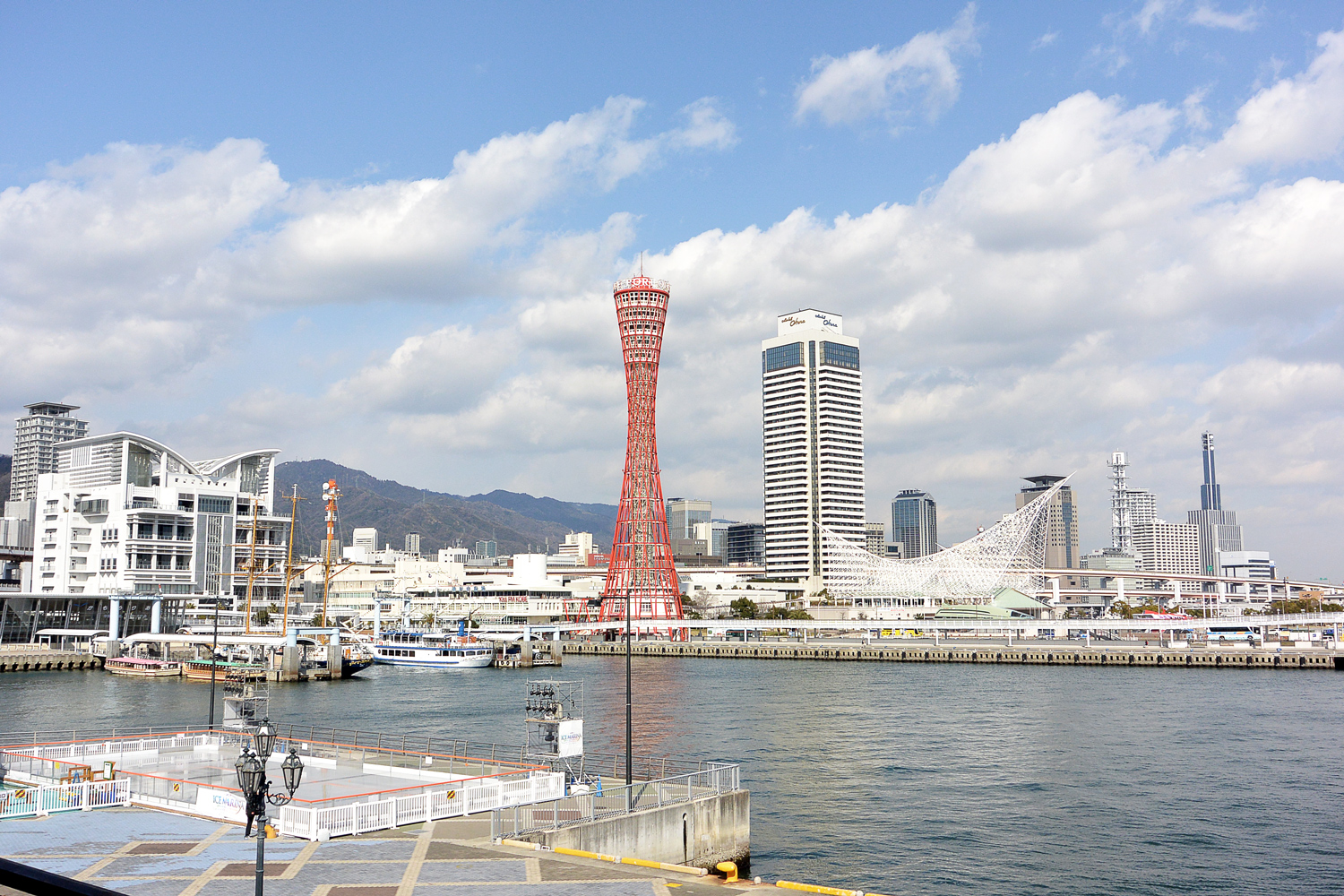 [/big_image]
[/big_image]
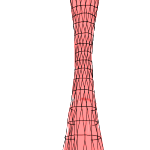 Kobe Port
Kobe Port
The iconic Kobe Port is probably important for many other different reasons, but for us it was just a cool view from a lot of shopping malls. With stores like Old Navy, Toys R Us and H&M, it almost felt like America.
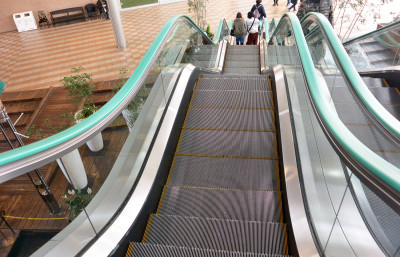
[big_image v=”” h=”200px”]
[/big_image]
 Akashi Kaikyo Bridge
Akashi Kaikyo Bridge
The world’s longest suspension bridge. Apparently it’s in Kobe. At first I felt like it was a super random “tourist stop” but it was actually pretty nice to get away from the city and just enjoy the view. Going inside, they have a little lounge area with a cafe, and then a walkway under the bridge, with a special portion with a glass floor.
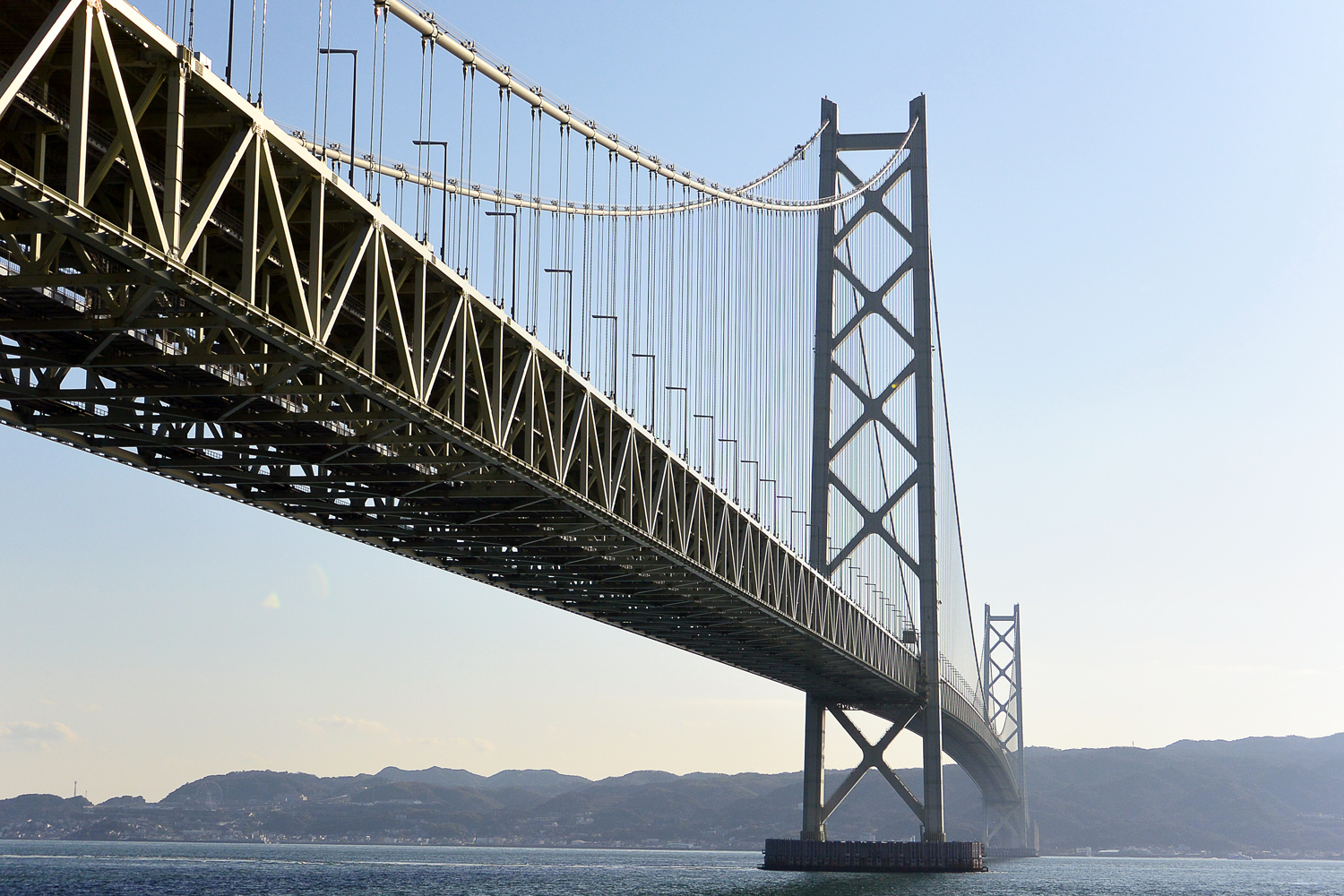
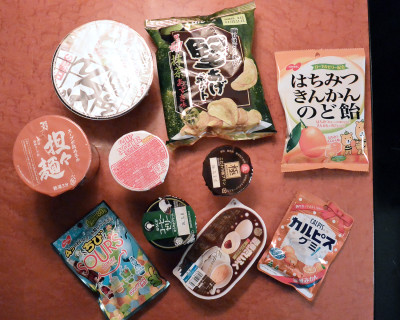
[one_third padding=”0 0px 0 0″] [/one_third]
[/one_third]
[two_third_last padding=”0 0px 0 0″] [/two_third_last]
[/two_third_last]
One last day in Japan, basically spent scrambling to buy anything that hasn’t been bought yet. So it was back to Dotonbori, braving those drugstore crowds.
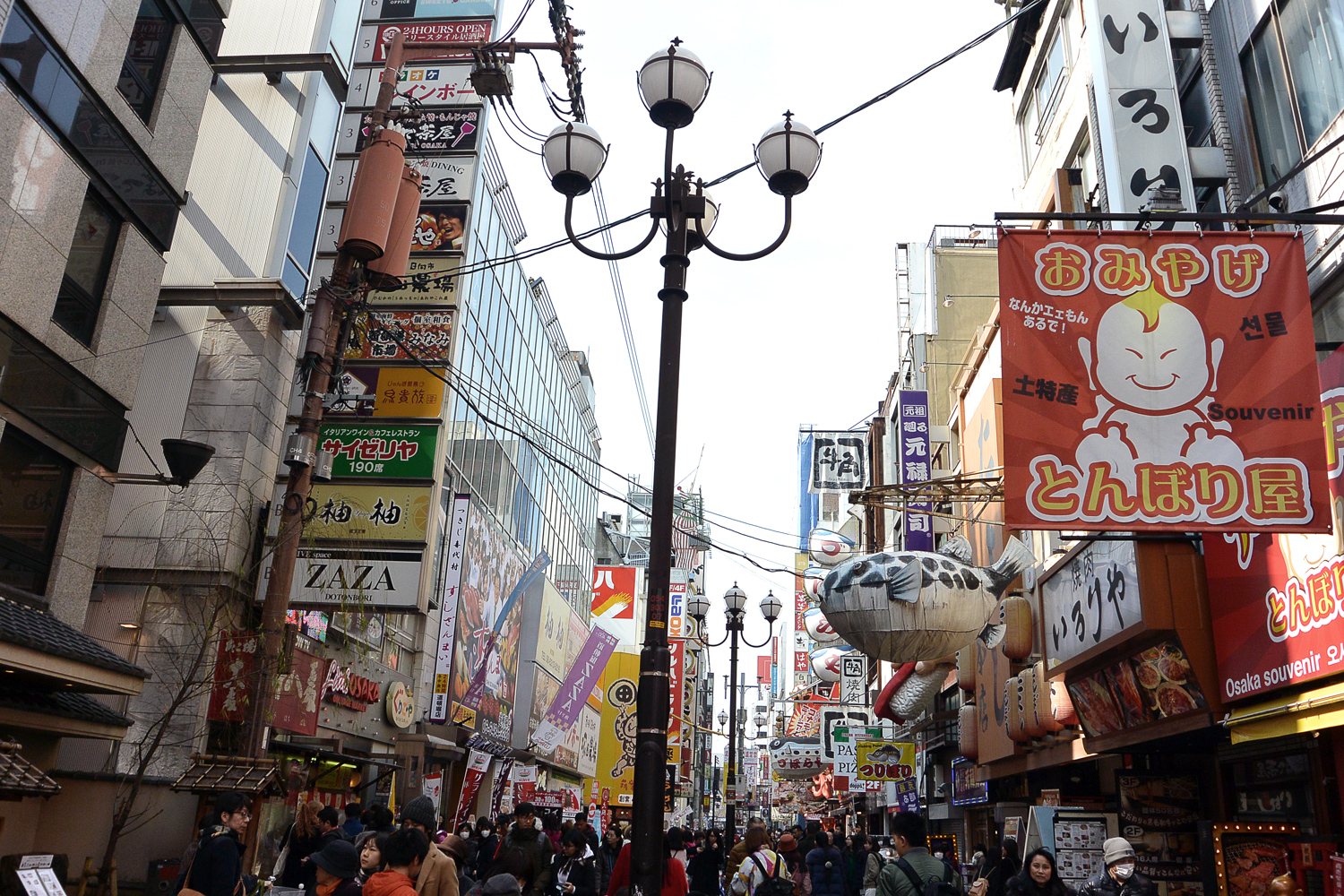
And finally…
Last meal in Japan: ramen. Which is ordered on a vending machine. And then you go to your very own ramen-eating cubicle. And fill out a scantron-like form with add-ins. And enjoy your ramen alone. Weird, but tasty.
[one_third]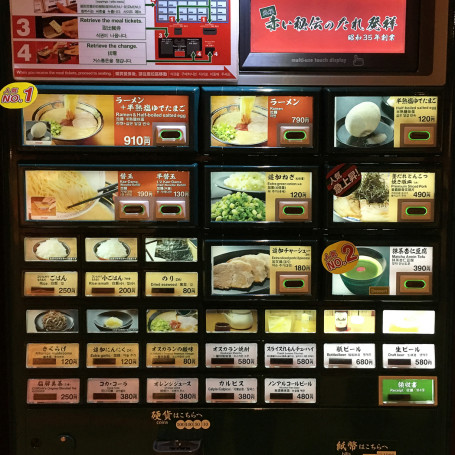 [/one_third][one_third]
[/one_third][one_third]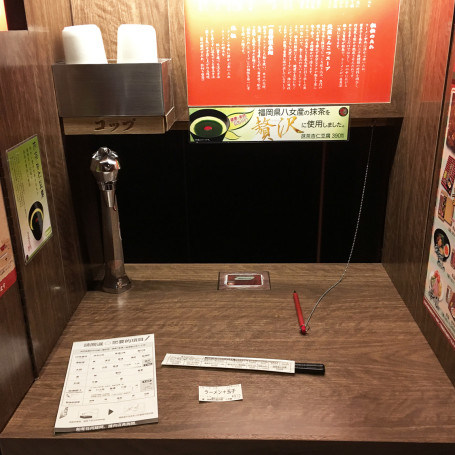 [/one_third][one_third_last]
[/one_third][one_third_last]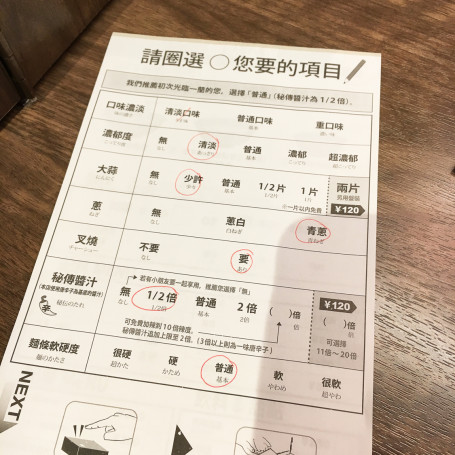 [/one_third_last]
[/one_third_last]
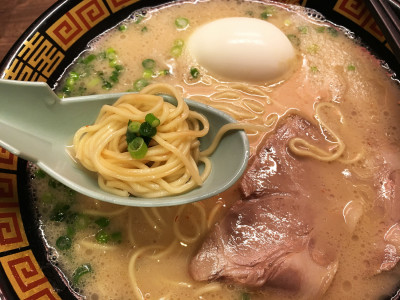
TL;DR: Japan is beautiful, everything tastes amazing, they have fancy toilets and packaging and I’ll definitely be going back.
[big_image]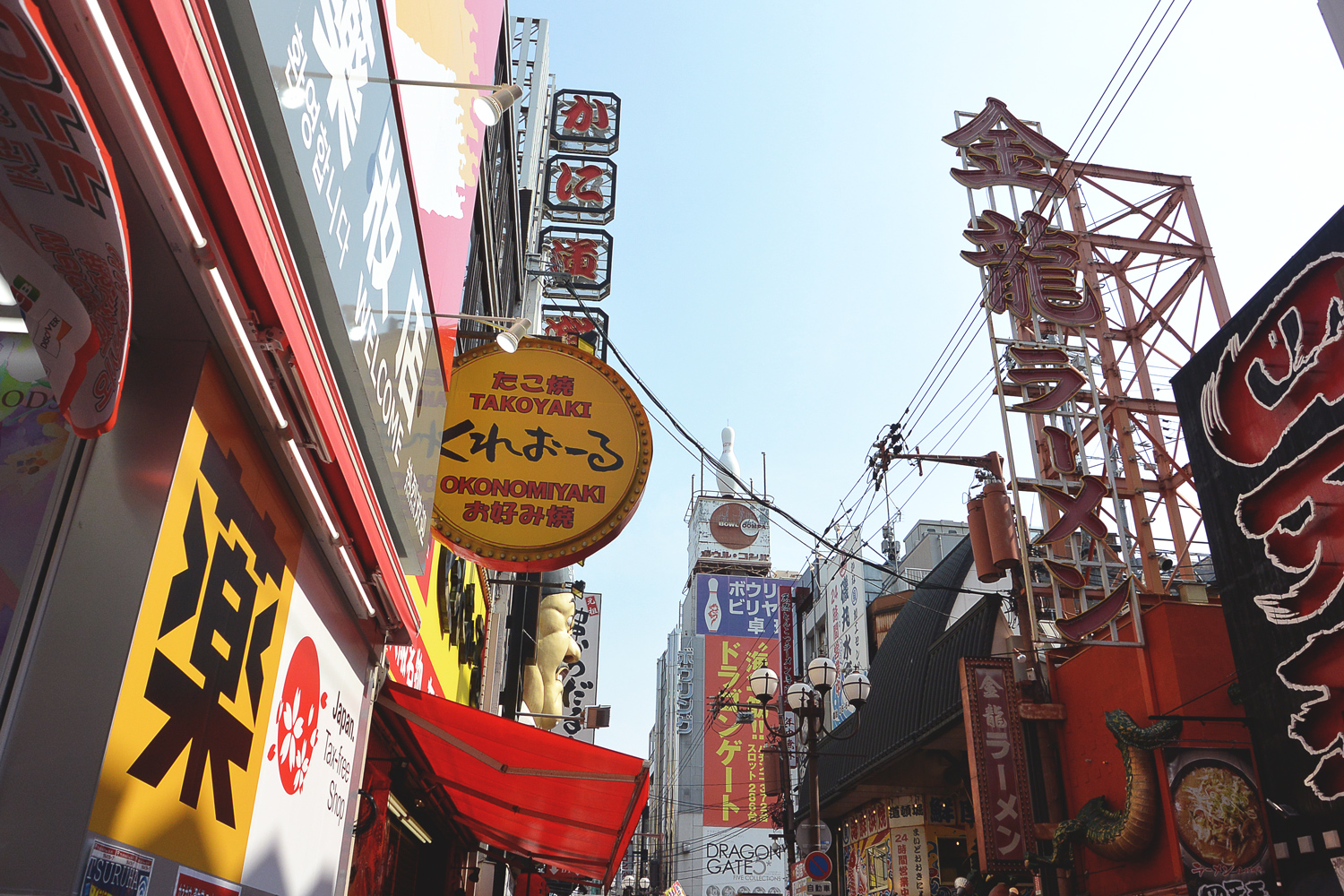 [/big_image]
[/big_image]
